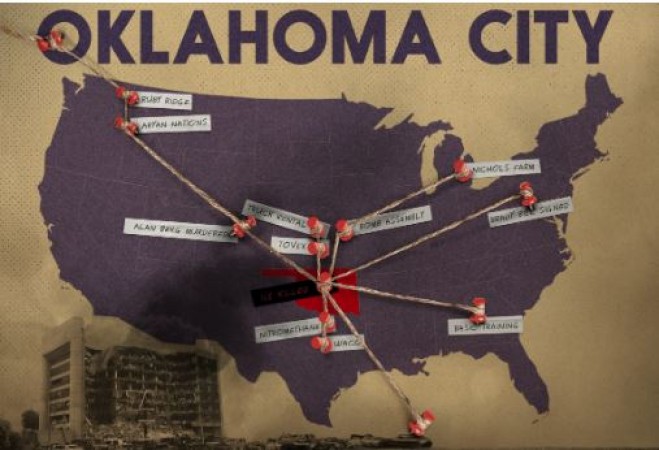
Oklahoma City, often referred to as OKC, is the capital and largest city of the state of Oklahoma, USA. With a rich history, vibrant culture, and a strong sense of community, the city has evolved into a diverse and thriving metropolis that captivates visitors and residents alike. Spanning a landscape of approximately 620 square miles, this city boasts a population of around 650,000 people, making it one of the most populous cities in the United States. Let's delve into the facets that have shaped Oklahoma City into the captivating destination it is today.
The history of Oklahoma City is a testament to the resilience of its inhabitants. The region was initially inhabited by various Native American tribes, including the Choctaw, Chickasaw, and Osage, among others. In the early 1800s, it was designated as part of Indian Territory, which served as a resettlement area for Native American tribes forcibly relocated from their ancestral lands.
Also Read: Oklahoma City National Memorial and Museum: A Tribute to Resilience and Remembrance
In the late 1800s, the Land Run of 1889 brought a significant influx of settlers to the area. On April 22, 1889, at precisely noon, a cannon blast signaled the opening of over 2 million acres of unassigned lands to non-Native American settlers, leading to a chaotic land rush as thousands of eager pioneers staked their claims, leading to the founding of Oklahoma City. This historical event is celebrated annually with the Oklahoma Land Run Parade and Festival, keeping the spirit of the land run alive in the hearts of residents.
Oklahoma City faced adversity in the 20th century, most notably with the Oklahoma City Bombing. On April 19, 1995, a domestic terrorist attack devastated the Alfred P. Murrah Federal Building, claiming 168 lives and leaving lasting scars on the city's psyche. However, the aftermath of this tragedy witnessed an unprecedented display of unity and resilience as the community came together to rebuild and heal. The Oklahoma City National Memorial and Museum now stands as a poignant reminder of the events of that day, honoring the victims and offering solace to those affected.
Also Read: Turkey: A Cultural Tapestry and Geopolitical Crossroads
Oklahoma City has experienced significant economic growth and diversification. Once heavily reliant on the oil and gas industry, the city's economy has expanded to include aviation, biotechnology, healthcare, and technology sectors. This diversification has made Oklahoma City more resilient to fluctuations in energy prices and has fostered a thriving entrepreneurial ecosystem.
The city's downtown has undergone a remarkable revitalization, with new commercial, residential, and recreational spaces emerging. Bricktown, a historic district located in downtown OKC, has been transformed into a lively entertainment hub, featuring restaurants, bars, shops, and a scenic canal where visitors can take boat tours and enjoy the vibrant atmosphere.
Oklahoma City offers a wealth of cultural attractions that cater to a wide range of interests. The Oklahoma City Museum of Art houses an impressive collection of American, European, and contemporary art, while the National Cowboy & Western Heritage Museum celebrates the history and culture of the American West. The Science Museum Oklahoma offers interactive exhibits that engage visitors of all ages, making it a popular destination for families.
Also Read: Culinary Journey through the Best Indian Restaurants in the USA
For music enthusiasts, the OKC Philharmonic and the Civic Center Music Hall host a variety of concerts and performances throughout the year. The city's love for sports is evident in its support for the NBA's Oklahoma City Thunder and the Minor League Baseball team, the Oklahoma City Dodgers.
Nature enthusiasts will find plenty to explore in and around Oklahoma City. The Myriad Botanical Gardens, located in downtown, offer a tranquil escape with beautifully landscaped gardens, a children's playground, and a Crystal Bridge Tropical Conservatory housing exotic plants and water features. Lake Hefner and Lake Overholser provide opportunities for boating, fishing, and picnicking, while the nearby Wichita Mountains Wildlife Refuge offers hiking trails, wildlife viewing, and stunning vistas.
Oklahoma City hosts a variety of festivals and events that celebrate its culture, heritage, and community. The Red Earth Festival showcases Native American art, dance, and culture, while the Oklahoma State Fair attracts thousands of visitors with its carnival rides, concerts, and agricultural exhibits.
Also Read: Top Tropical Paradises for Relaxation
The Paseo Arts Festival, held in the historic Paseo Arts District, features the works of local artists and live performances, and the deadCENTER Film Festival brings filmmakers and movie enthusiasts together for a showcase of independent films.
Oklahoma City's journey from a land run settlement to a bustling urban center is a testament to the indomitable spirit of its people. With a rich history, vibrant cultural scene, and a welcoming community, the city has transformed into an enticing destination for residents and visitors alike. Oklahoma City's ability to overcome adversity and embrace progress while preserving its Western heritage makes it a unique and endearing city with a bright future ahead.
Also Read: Top Architectural Marvels to Marvel at